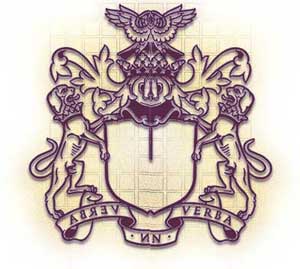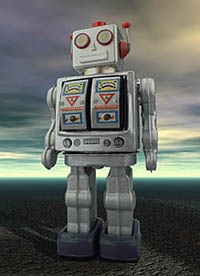

As part of our plan to monitor the activities of the Royal Society, we attended their recent meeting on 'Artificial Intelligence and the Mind: New Breakthroughs or Dead Ends?".
Founded in 1660 by the top boffins of the day (all of them masons), and given the Royal Charter in 1662 by Charles II, the Royal Society continues to play a vital role in advancing the interests of the ruling class through science.


Let's begin by examining the conflict between what we shall term 'vague science' and what we know as Royal (or State) Science. Vague science is a treatment of science that prefers intuition over intelligence, that tries to follow a particular path and push it to a limit - it is nomadic and explores continuous variations and singularities. A circle is an ideal form, and the domain of Royal Science, but roundness is vague and fluid, subject to specific material forces, distinct both from the circle and things that are round. So Royal Science conceives of science as a search for laws, for the fixed essences, and the extraction of constants. Royal Science adopts intelligence over intuition.
During the meeting differences arose over the way to construct intelligent robots. We may summarise these differences as the 'embodied' approach versus the 'disembodied' approach. The embodied faction promote the idea of sticking a robot in a specific environment and allowing it to learn from its interaction with specific and controlled events in that environment (for example, a robot learning to move around a space avoiding obstacles).
The disembodied approach advocates placing the robot in a non-specific environment where it may learn from a variety of complex stimuli. This approach makes sight the robot's primary sense and believes that the robot is able to 'grow up'. A parallel dispute to this conflict occurred concerning definitions of consciousness, and how to define information and meaning. Roboticists tended to adopt a mechanical view of consciousness which regards us as essentially seeing/moving beings interacting with an ever-changing environment. We are, so they claim, 'semantic engines', that is, information control(led) systems. Others, from a philosophical background, attacked the idea that robots could be conscious, and raised the question, "Can meaningful information exist without an understander?"

These disputes represent activity on the border between vague science and Royal Science. Some aspects of artificial intelligence research use the qualities of vague science; for example, the notion of 'exploration by legwork', learning through application, not to test out theories, but to follow ideas. Royal Science will seek to appropriate, restrain and discipline the vague science, so that the vague science will ultimately conform to the Royal Scientific world view.
When we oppose vague science with Royal Science we are indicating two qualitatively distinct treatments of science. The idea of the circle and the concept of roundness are two types of qualified geometry. Both ideas are situated in an objective zone which attempts to explain and organise the world. The state is perpetually producing and reproducing ideal circles, whilst the vague science is necessary to make something feel round. Vague science in the form of artificial intelligence may sometimes pose a threat to Royal Science, like an initial experimental surge which, for example, questions existing scientific specialisations. However, the vague science will never dare question the supreme distinction made by capitalist culture between the intellectual and the manual, the theoretical and the practical, or the governors and the governed. Both these treatments of science service capitalist social relations and the organisation of people through work; vague science can only ever amount to a demand for a different division of labour.
Artificial intelligence replays the old alchemical dream of magical control, the quest for the 'homunculus', the artificially created human intelligence (many members of the Royal Society, like Isaac Newton the inventor of gravity, were also active occultists). So vague science may appreciate the experimental use made of artificial intelligence during the Gulf War, but forgets to mention that more people were killed on the road to Basra than at Hiroshima (to make sure that the threat of revolution in Iraq was suppressed and that car drivers in the west still got their petrol at the right price). Meanwhile, Royal Science promotes artificial intelligence for research into how the human brain functions, with results that enable teachers to improve their understanding of child behaviour, but neglects to comment on how this actually enables the school to have more control over the kids and their preparations for a life of wage slavery.
Different thought processes can be described as different forms of conceptual 'architecture'. So do we all get a say in the design of these semantic buildings? Of course not. All forms of architecture, and ways of thinking, are subsumed into the architecture of capitalism. So is there a way of extricating our thought from capitalist constructions? One possible technique involves the use of satire. In 1691 members of the Royal Society began publishing the Athenian Gazette, which attempted to create a popular appeal for science by giving their answers to any questions of a scientific nature the general public could give them. As a response, writers like Tom Brown and Ned Ward released satirical tracts that took the piss out of this attempt to explain what all the answers are.
All attempts to organise knowledge are absurd. Despite the efforts of vague science and Royal Science, people will continue to find their own uses for technology and continue to create satirical attacks on the establishment. Many of these attacks implicitly question the binary oppositions central to capitalist culture; the artist and the spectator , avant-garde and popular, production and consumption. Strange clusters of ideas are forming which seek to challenge the assumptions manufactured in the so-called objective zone of science, exploring what we can describe as our own radical subjectivity.